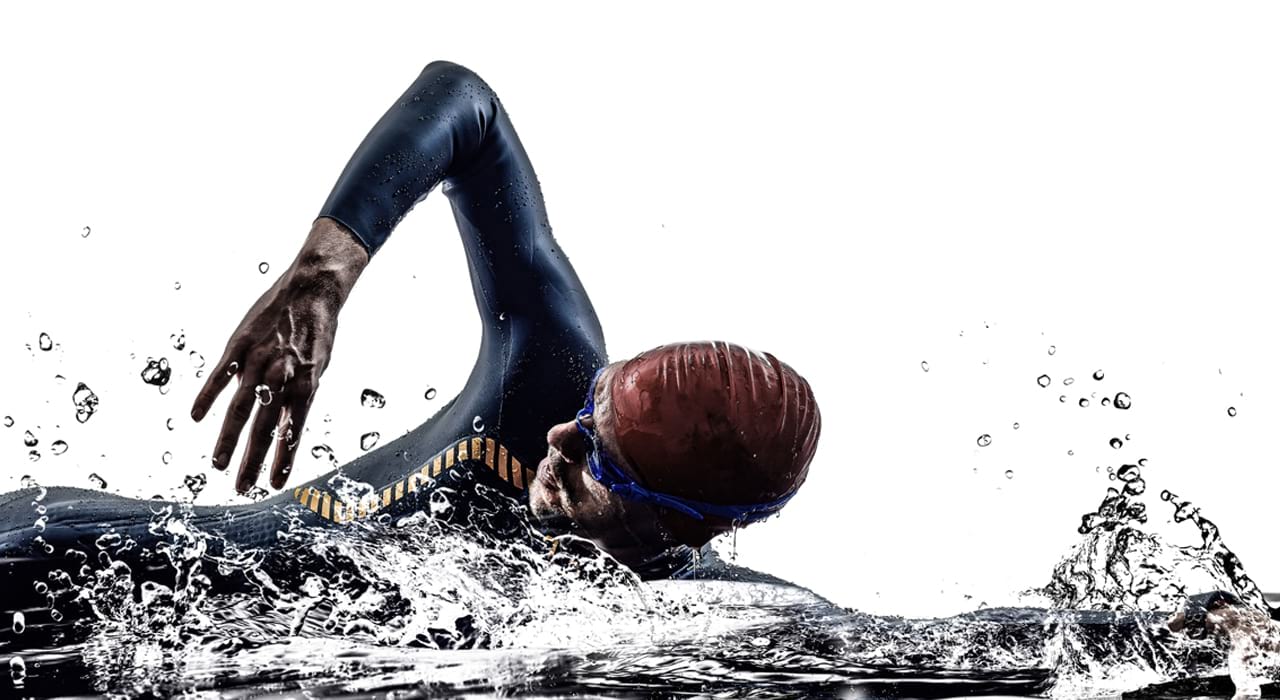As the swimming and strength coach to mixed martial artist Jon Jones I like to think I’ve played a small part in him becoming the UFC light heavyweight champion with the most 205lb title defenses in the promotion’s history.
Jon likes to fit in at least two swimming sessions per week into what is already a hectic training schedule. And the reason? Well, swimming is a great addition to any athlete’s strength and conditioning program, because it increases endurance and strength in more complex ways than you could ever do on dry land.
Psychological benefits
But to be a world champion like Jon you need more than just physical strength, you also have to be psychologically strong. Swimming’s mental aspect should never be underestimated. If you think about it, you’re being pushed in a somewhat physiologically foreign environment. And getting out of your comfort zone forces you to improve and develop new skills.
As Jon once told me himself: “The swimming pool is just such a good workout. I’m a pretty good fighter and runner, but the pool is relentless. Swimming is definitely the toughest form of exercise. It’s brutal.”
Muscle development
As well as Jon, I also coach swimming to two other elite UFC fighters: Travis Browne and Cub Swanson. Now, the reason these guys are so keen to get into the pool on a regular basis is the explosive power gains swimming offers. Unlike training on terra firma, swimming forces your muscles to fight against the resistance water provides, which develops the power needed to knock out a rival with just one punch, especially if you’re doing short-range sprints.
But it can also help produce the lung-bursting stamina needed to stand in the middle of the Octagon and slug it out for up to 25 minutes in a championship bout.
And that mix of and strength and endurance is, I’m sure, something you’d all like in your armory.
Mood changes
Research has found that people who swim regularly report less tension, depression, anger, confusion and more vigor after exercising. And a study conducted at Harvard Medical School followed over 40,000 people from the ages of 20 through to 90 and discovered that swimmers have significantly lower death rates compared to other fitness fanatics such as runners or walkers.
If you’re still not convinced then consider this: a treadmill canter only burns about 765 calories per hour. The bike fries a measly 535 calories an hour while the rower tops the charts, of the land-based cardio, by burning up to 802 calories. Swimming steams into first place by burning a whopping 818 calories an hour.
The Workout
The warm-up
Swim 200 meters at a slow pace. Most pools are 25 meters so that’s a total of eight lengths. If you need to rest a few seconds at the end of each length, that’s fine.
The main event
Swim six lengths at a much faster pace than your warm-up then rest for 15–20 seconds. Once you’ve got your breath back swim another six lengths at the same pace. Take a two-minute breather and then move to the breadth side of your pool (it’s the shorter end). It’s usually about 12–15 meters long. Dive in and swim as fast as you can to the other side.
Pull yourself out of the pool and stand up on the edge. Give yourself five seconds to recover then dive back in and swim as fast as you can to the other side and get out. Do a total of 10 of these, which are called ‘dive swims.’
The cool down
Swim 200 meters at a very slow and controlled pace taking a break as and when you need it.
Try this session at least twice a week and you’ll soon be burning off fat for fun while adding lean muscle. Your rest times may vary for each athlete in the beginning, because swimming is such a different type of cardio. Some people might be gasping for air after swimming for just 25 meters, while others will recover pretty quickly.
The key is to be consistent with your swimming and you will make huge strides in your fitness.
Find workouts and more in every issue of TRAIN magazine.







